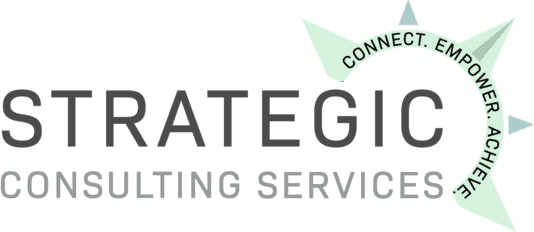The New World of “Hybrid Work From Home”
As COVID-related lockdown restrictions are lifted, people are enjoying concerts, restaurants, sporting events and other activities signaling a return to “normalcy.” However, in the business world, we have to realize that some things are not ‘going back to normal.’
One of the most crucial permanent changes is that people are going to “work from home” (WFH) at least part of the time. Simply put, work from home is here to stay. According to Forbes, in 2018 7% of civilian employees worked remotely, whereas in 2021, 27% do. That’s almost a 400% increase. Employees like working from home, too.
According to Bloomberg, 39% of employees would consider quitting if employer is not flexible new remote work. This number goes up to 49% for younger (millennial) workers. Employees appreciate having a choice in the matter.
…And employers should welcome this new paradigm, as they can benefit from happier employees and several other factors, discussed below.
Pros and Cons of Work From Home for Workers
Pros:
- More flexibility. Workers can manage their lives and families much more effectively when they are close to home and near their loved ones.
- Increased productivity and worker satisfaction. Workers can structure their tasks more effectively and reduce distractions when they are in their home environment.
Cons:
- Loss of work-life balance. Many have found that it can be hard to ‘step away from the computer,’ especially when you work with people in other time zones. A recent survey by Kentik, found that 51% of WFH employees are concerned about their work life balance.
- Isolation and mental health challenges. Not interfacing with coworkers can cause sense of isolation can set in. While productivity officially jumped during work from home, eventually it dropped as
Pros and Cons of Work From Home for Businesses
Pros:
- Reduced need for office space provides cost savings. Many companies are letting go of expensive leases as they are adapting to having their staff WFH part or all of the time.
- Increased productivity and happier workers. Workers have consistently stated they like to work from home, and would thrive in a ‘hybrid’ work from home model. Employees also appreciate having input on setting their own hybrid schedule.
Cons:
- Challenges for teams and communications. Not communicating directly ‘in-person’ and in groups has proven to be a challenge for some collaborative teams. Zoom and other video chat solutions has greatly helped mitigate this disadvantage, as have instant messaging apps like Slack.
- Less visibility into employees’ well-being. For HR and EAP professionals, less interfacing ‘in person’ with employees can reduce their opportunities to provide help and support to them. Ergonomics can be a issue here as well, as employees may not be aware of how to configure their home offices in the ideal manner.
- Cybersecurity concerns. As workers are connected to home networks and using more devices with less IT oversight, the risks are higher for hackers and malware to negatively impact the business.
Guiding Principle: Employee Psychological Safety
As businesses navigate the post-Covid landscape, they are faced with many decisions about how to structure policy to integrate WFH. Managers must make staffing, scheduling, and coordination decisions that take into account employees’ personal circumstances.
A guiding principle is to focus on psychological safety of their employees. Psychological safety is one of strongest proven predictors of team effectiveness, and it’s always a good idea to frame decisions from the perspective of how they will best contribute to employee psychological safety.
In order to do so, here are some recommendations to implement as you transition to a hybrid WFH model.
- Prioritize the Employees’ Needs. As you consider policy, you want to arrive at a functional paradigm where everyone is satisfied in their work and the company is getting the production that it needs.
- Involve the Employee in the Decision. Employees have been shown to actually prefer to commute ‘on site’ and work from home part of the time. They have also shown to be appreciative if they get to be involved in their work location scheduling.
- Use Technology to Keep Everyone Connected. Make sure the employees understand the expectations that they will be participating in work activities via Zoom, Slack, or other platform. Support all members of your workforce in learning how to utilize these new tools, as many people get frustrated and experienced technical difficulties.
- Continue to Support Disabled Employees in Their New Environment. Employees with disabilities and injuries will often face new challenges as they adapt to working from home. Make sure they know that their benefits and your support is available in this new environment.
Get Help From Our Team on Implementing Your ‘Hybrid WFH’ Program
For Twenty Years, we have been helping companies in the Pacific Northwest with worker injuries, disabilities, and other vocational challenges. Our team is here to share our experience to help your company thrive by enhancing your employees’ well-being.
We have partnered and provided solutions to some of the largest companies in the world (such as Boeing, Microsoft, and Amazon). But, at our core, we are still “people taking care of people,” one project at a time. Our success is built upon and providing you the best solution to your workplace challenge. Contact us today by filling out a form (below), submitting a referral, or visiting our ‘Contact Us‘ page to find your nearest office.
Ric has been working in the industry since 2002, specializing in developing employer jobsite analysis and light duty programs, ergonomics consultations and adjustments, disability accommodations and providing effective return to work solutions. Ric is Matheson trained in Ergonomics and is a Certified Ergonomics Evaluation Specialist. He earned a Bachelor of Arts Degree in Psychology from Western Washington University and later his Master’s Degree, M.Ed., Education Counseling from Seattle Pacific University. Ric is currently a Registered Vocational Rehabilitation Counselor for the Department of Labor and Industries and has been a Certified Disability Manager Specialist since 2006.

